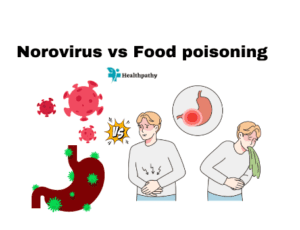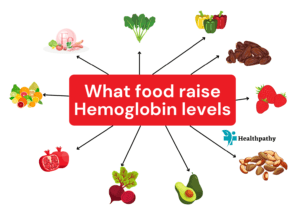Norovirus vs Food poisoning

Norovirus and food poisoning are two distinct but related gastrointestinal illnesses that affect millions of people worldwide each year. Both can cause similar symptoms, but they have different causes, transmission methods, and treatment approaches. This article will explore the characteristics, differences, and similarities between norovirus and food poisoning. Let’s start Norovirus vs Food poisoning
Norovirus:
Norovirus is a highly contagious virus that primarily affects the gastrointestinal system. It is responsible for a significant portion of acute gastroenteritis cases globally. The virus spreads through the ingestion of contaminated food or water, contact with infected individuals, or touching contaminated surfaces. Norovirus outbreaks often occur in places where people are in close proximity, such as cruise ships, schools, nursing homes, and restaurants.
Symptoms of Norovirus:
Symptoms of norovirus infection usually appear within 12 to 48 hours after exposure and may include-
- Nausea.
- Vomiting.
- Diarrhea.
- Abdominal pain.
- Fever.
- Headache.
- Muscle aches.
The illness is typically self-limiting and lasts 1 to 3 days, but it can lead to dehydration, especially in vulnerable populations like young children, the elderly, and those with weakened immune systems.
Prevention of Norovirus:
Prevention of norovirus involves thorough handwashing with soap and water, especially after using the restroom and before handling food. Additionally, proper disinfection of surfaces and contaminated items can help curb its spread. Currently, there is no specific antiviral treatment for norovirus, so supportive care, such as rehydration and rest, is the mainstay of management.
Food Poisoning:
Food poisoning, also known as foodborne illness, encompasses a broader category of illnesses caused by consuming contaminated or spoiled food. Numerous microorganisms can cause food poisoning, including bacteria, viruses, parasites, and toxins. Common bacterial culprits include Salmonella, Escherichia coli (E. coli), Campylobacter, and Listeria, while viral causes can include norovirus, Hepatitis A, and Rotavirus.
Symptoms of Food poisoning:
The symptoms of food poisoning vary depending on the causative agent, but they generally include-
- Nausea.
- Vomiting,
- Diarrhea.
- Abdominal cramps.
- Fever.
In severe cases or with certain bacteria like E. coli O157:H7, there can be bloody diarrhea and potentially life-threatening complications. The incubation period and duration of the illness also differ depending on the specific pathogen involved.
Prevention of Food poisoning: Norovirus vs Food poisoning
The prevention of food poisoning involves proper food handling, storage, and cooking practices. Maintaining adequate hygiene in the kitchen and ensuring that food is properly cooked and stored at appropriate temperatures can significantly reduce the risk of contamination. When outbreaks occur, public health authorities may investigate and implement measures to trace the source and prevent further spread.
Treatment of Food poisoning:
Treatment for food poisoning also depends on the causative agent and the severity of the illness. In many cases, supportive care, such as rehydration and rest, is sufficient for recovery. However, some cases may require specific antibiotics or antiviral medications if the cause is bacterial or viral, respectively.
Comparison: Norovirus vs Food poisoning
Although norovirus and food poisoning can both result in similar gastrointestinal symptoms, the primary difference lies in their causes. Norovirus is a specific virus that spreads mainly through person-to-person contact and contaminated surfaces. At the same time, food poisoning refers to a broader group of illnesses caused by various bacteria, viruses, parasites, or toxins present in contaminated food.
Both illnesses can be prevented to some extent by practicing good hygiene and proper food handling procedures. Handwashing, disinfection of surfaces, and appropriate cooking temperatures are essential measures to reduce the risk of transmission for both norovirus and food poisoning.
Conclusion:
Norovirus and food poisoning are distinct yet related gastrointestinal illnesses with different causes, modes of transmission, and treatments. While norovirus is a viral infection primarily transmitted through person-to-person contact and contaminated surfaces, food poisoning encompasses a range of illnesses caused by consuming contaminated food. Vigilance in personal hygiene and food safety practices is crucial in preventing the spread of both norovirus and foodborne illnesses and safeguarding public health.
Must Read:



Follow us: Norovirus vs Food poisoning




